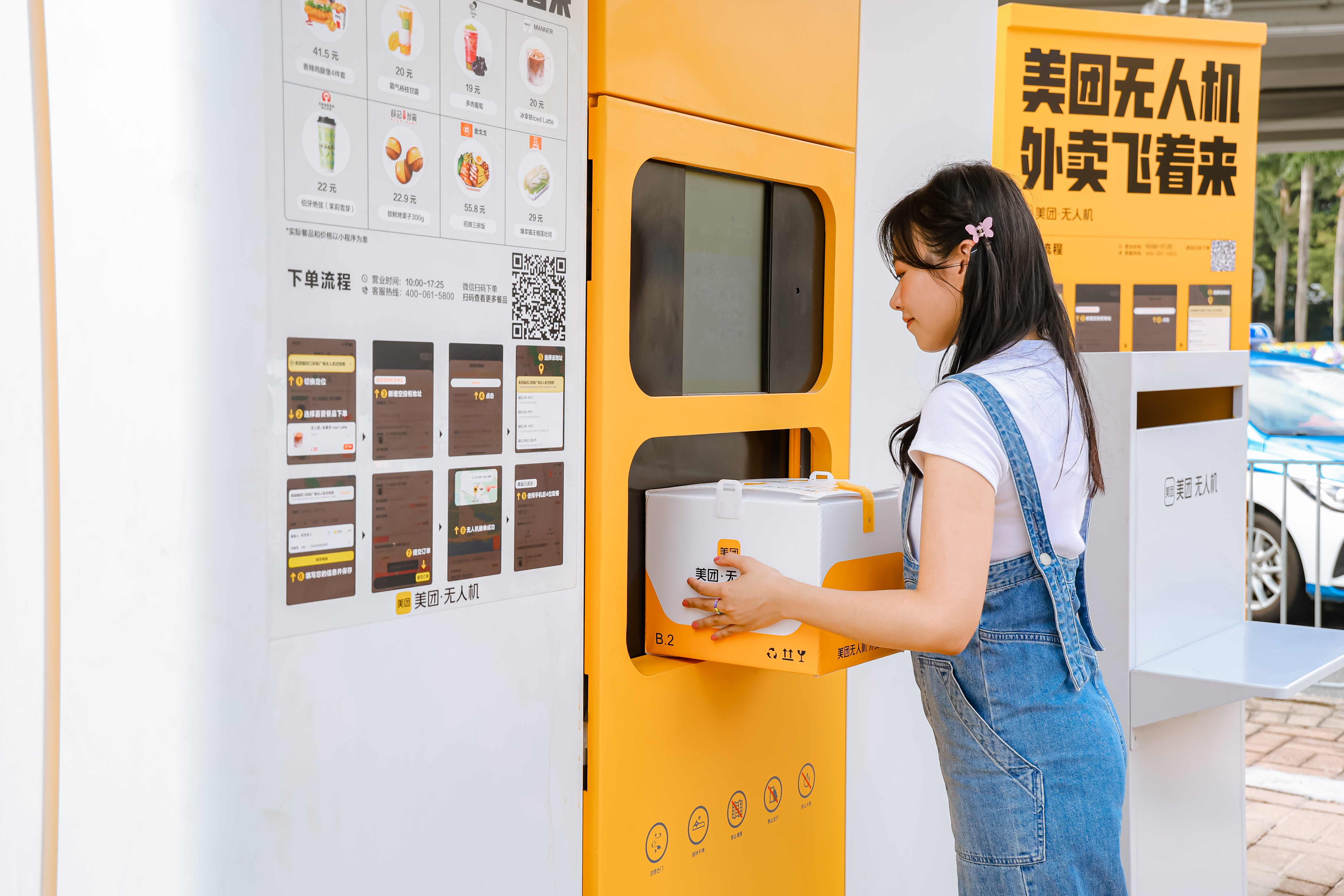
Hong Kong residents traveling to Shenzhen can now receive takeaway food orders delivered by drones at Futian checkpoint following the official launch of a new drone delivery route on Wednesday.
The route is the first of its kind in the country to be set up in a border area.
The new service, by online delivery platform Meituan, allows people from Hong Kong to place food orders through its app or its WeChat mini-program; the orders are then processed and dispatched across the border for collection at a designated drone landing area at the checkpoint, with a delivery time of 10 minutes at fastest.
Customers can use their Hong Kong mobile phone number to place their orders and pay via WeChat Pay HK, the Hong Kong version of WeChat Pay.
ALSO READ: HK retains high overall ranking in rule of law index
The move comes as a growing number of Hong Kong residents are choosing to travel across the border to shop, dine and for entertainment. According to a report by Meituan, Shenzhen was the most popular destination in the first quarter for Hong Kong residents “heading north” to spend, with transaction values having grown by 11.2 percent and the number of orders by 18.9 percent on a quarterly basis.
Yan Yan, public affairs director of Meituan's drone business, said hundreds of takeaway orders are generated every day at Futian checkpoint, which are mainly placed by Hong Kong residents who commute between the two cities. However, hundreds of thousands of people go through the area every day, making the handover process more difficult.
“On average, it takes nearly 20 minutes longer to deliver takeaways at Futian checkpoint, compared with other areas,”she said. “The launch of the new route aims to solve this problem.”
She said that the drone delivery route is expected to save nearly 30 minutes in waiting time, and having a fixed landing spot will save people the trouble of having to look for their deliveries.
The development of China's low-altitude sector is gathering momentum. The low-altitude economy, viewed as a strategic emerging industry and a new growth engine for the country, was included in the Government Work Report for the first time this year.

A report by market research firm CCID Consulting, a think tank affiliated with the Ministry of Industry and Information Technology, said China's low-altitude economy was worth nearly 506 billion yuan ($71.15 billion) last year, up 33.8 percent year-on-year, and its value is expected to surpass 1 trillion yuan in 2026.
ALSO READ: Dinosaur fossils found in Hong Kong for first time
Shenzhen is striving to play a leading role in the sector. The city early this year enacted the nation’s first legislation on the low-altitude economy, laying a legal foundation for its development by setting regulations on a range of aspects, including infrastructure, flight service, industry application, technological innovation and safety management.
In the long term, low-altitude flight is not just about flying within a city, but about expanding beyond city limits to achieve cross-boundary flights, Wang Guowen, director of the center for logistics and supply chain management at the China Development Institute, a think tank based in Shenzhen, said.
This will require rulemaking in terms of low-altitude flight standards, safety and flight certification, he said.
Hong Kong is also jumping on the bandwagon, with Chief Executive John Lee Ka-chiu announcing last week in his Policy Address the establishment of a working group on developing the low-altitude economy.
Deputy Financial Secretary Michael Wong Wai-lun, who leads the group, said there is a strong interest in launching drone delivery services for takeaway food in Hong Kong. The group is communicating with low-altitude industry players, hoping to open applications for pilot projects by the end of this year and to launch the projects in early 2025.
Contact the writer at sally@chinadailyhk.com


